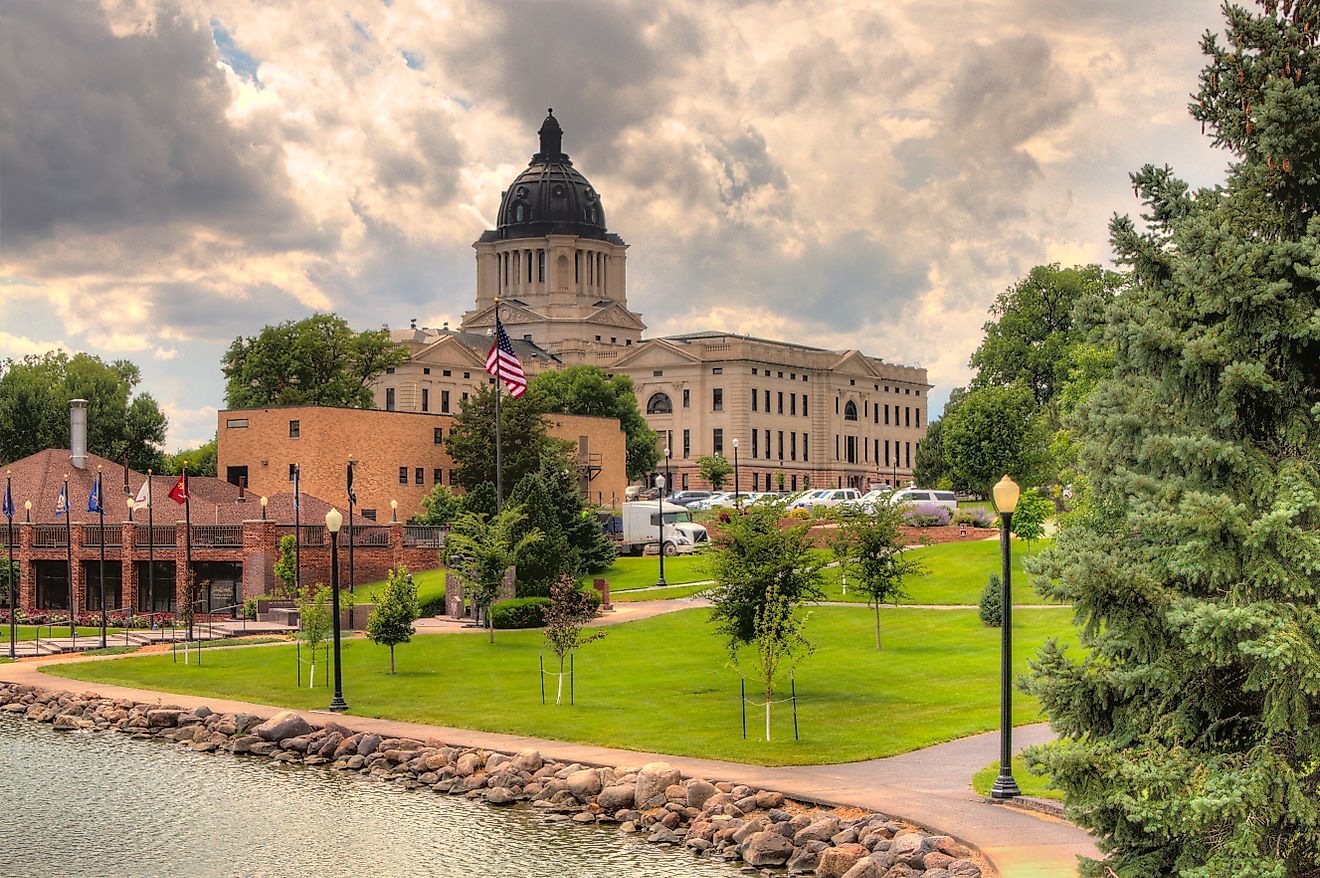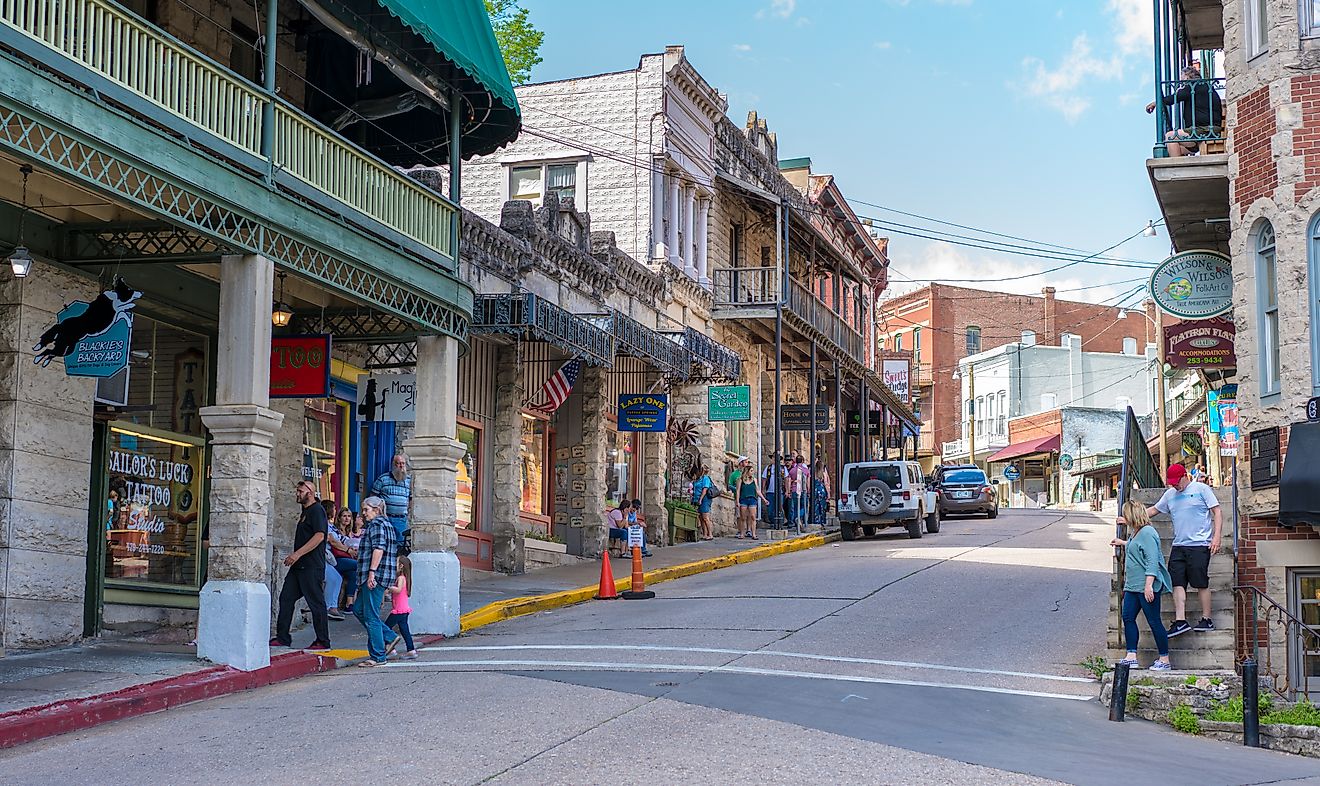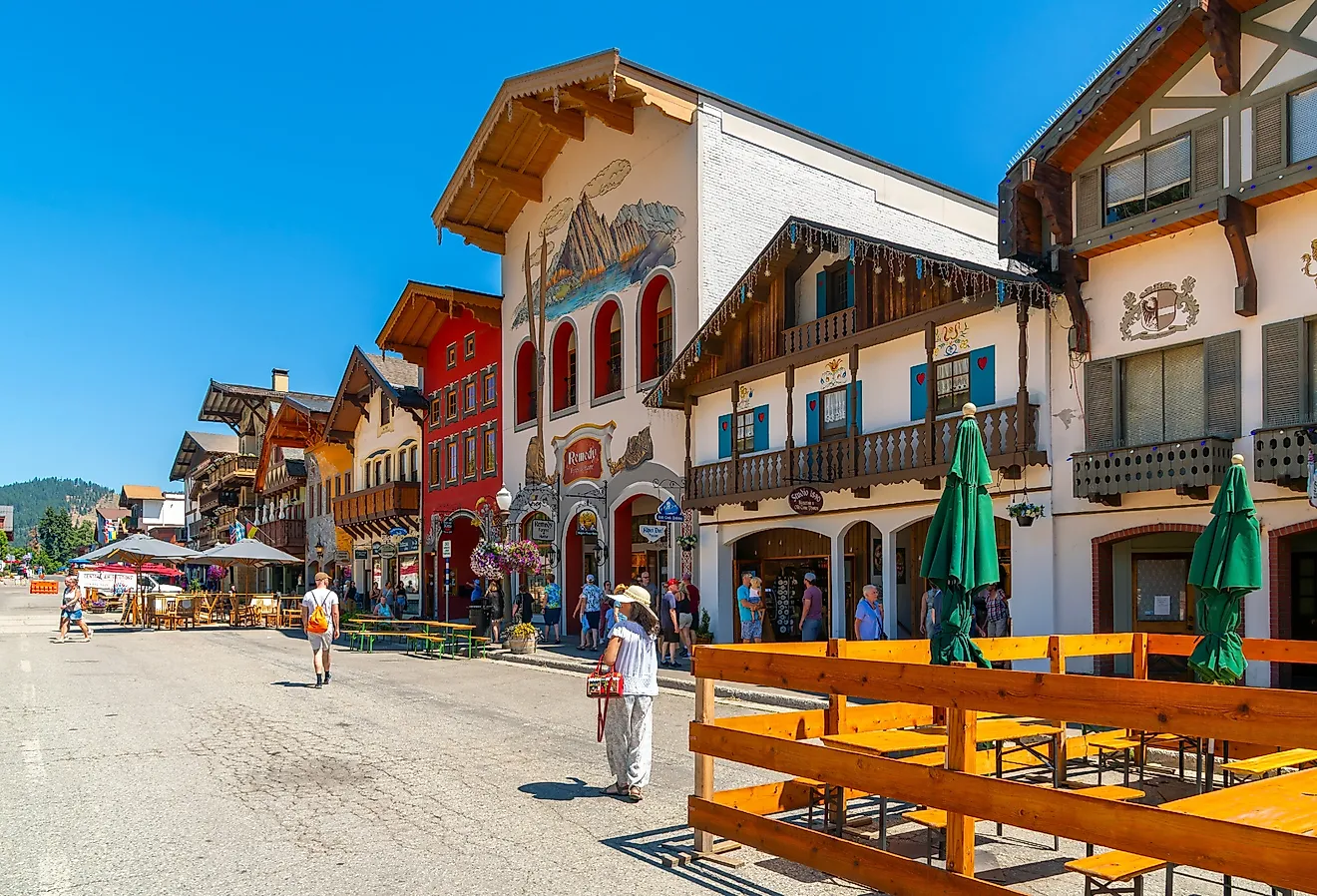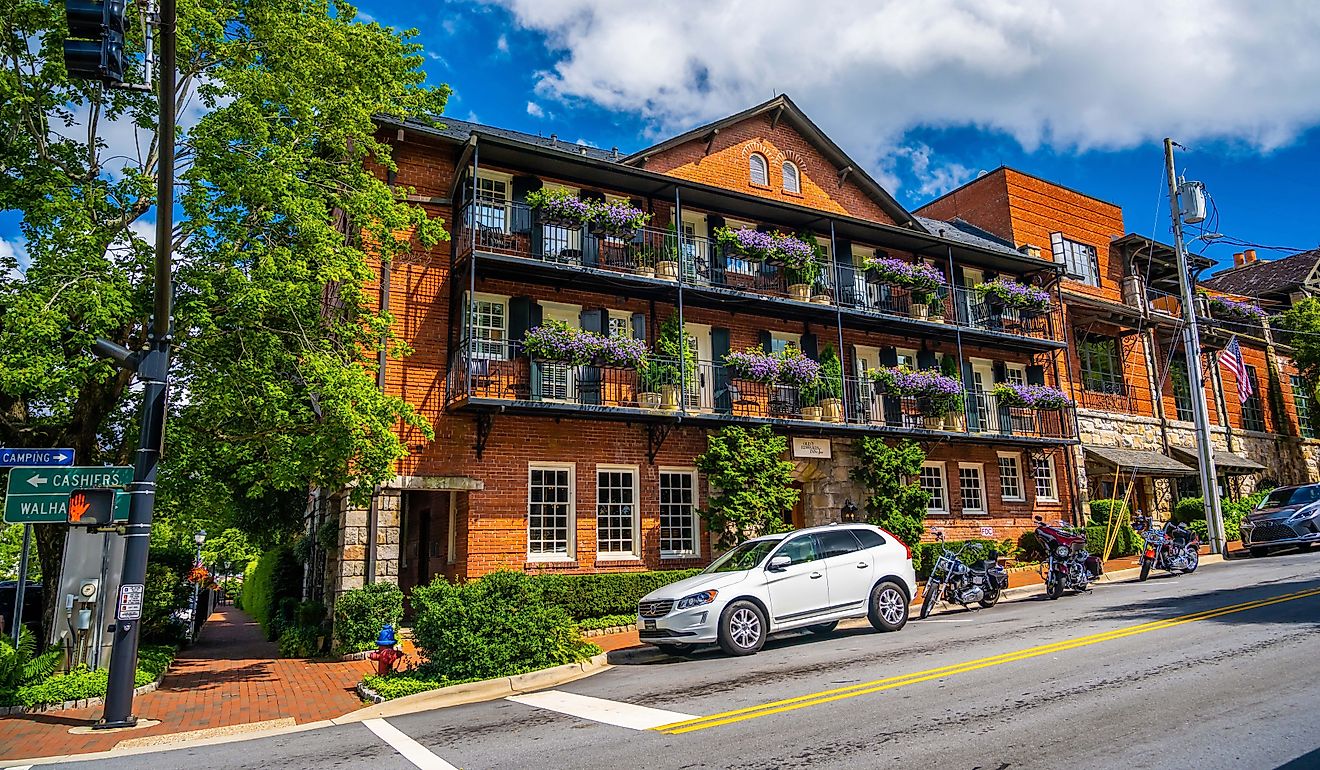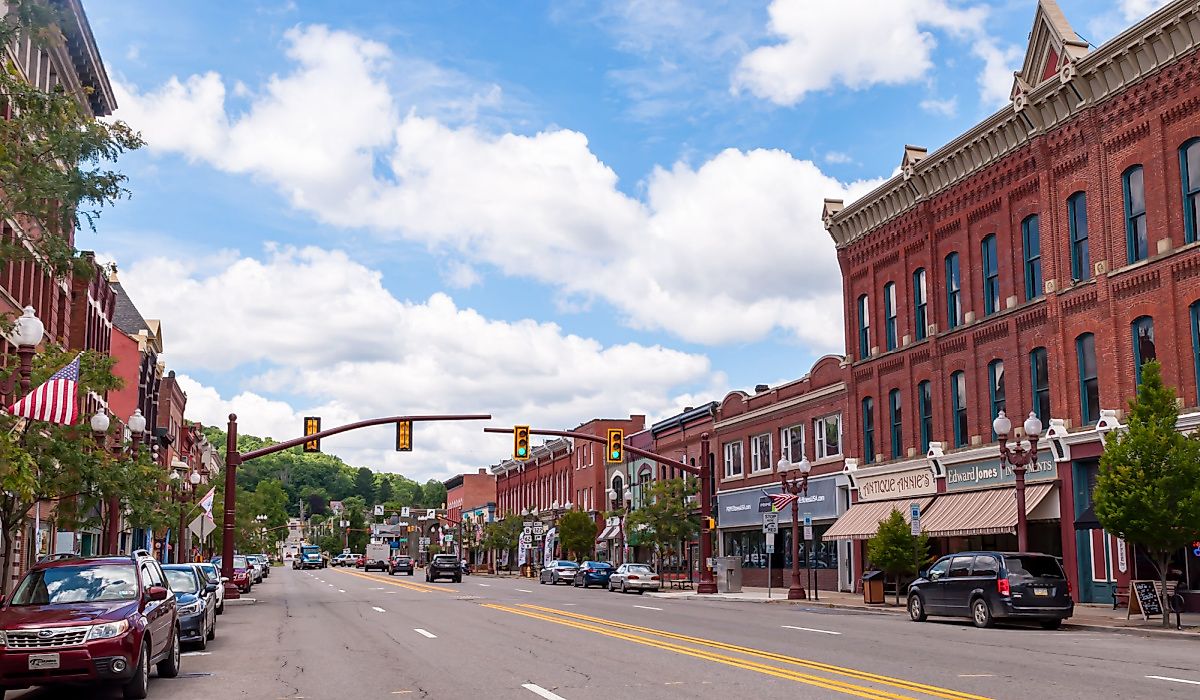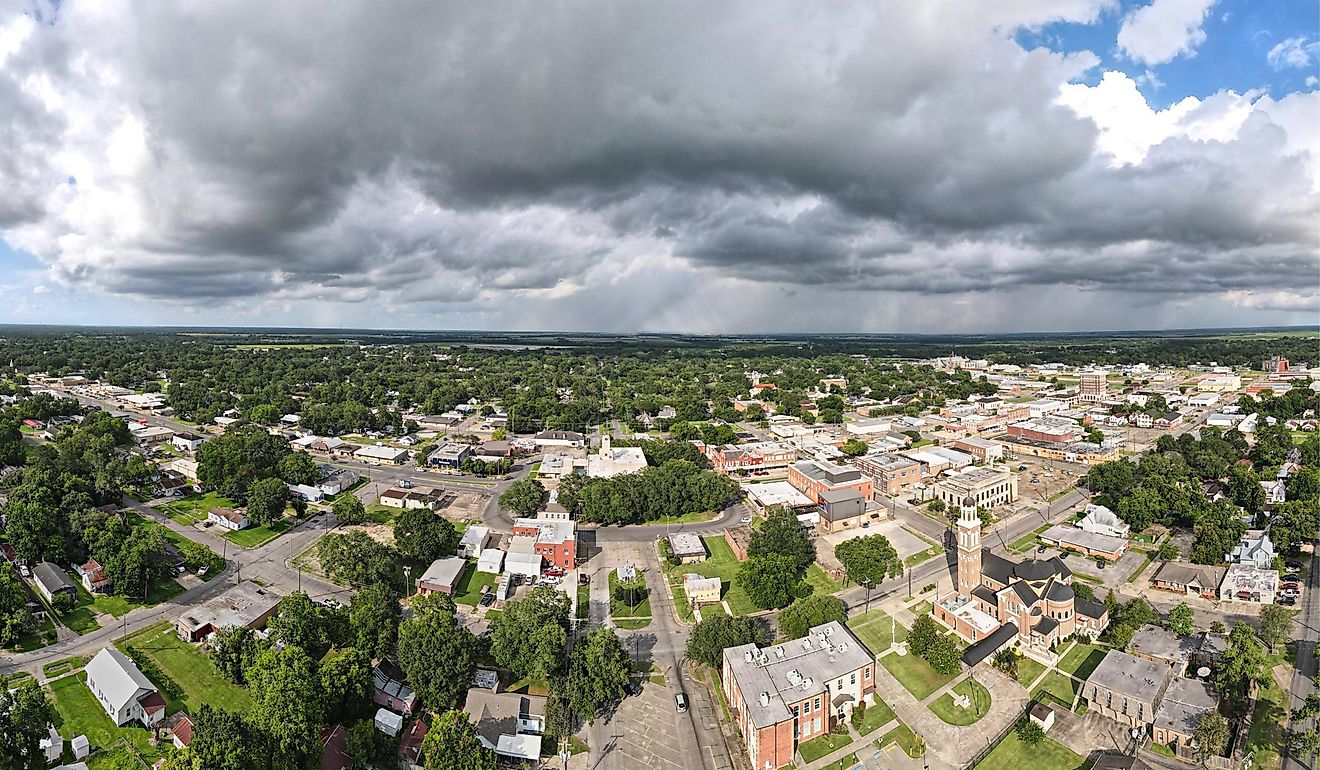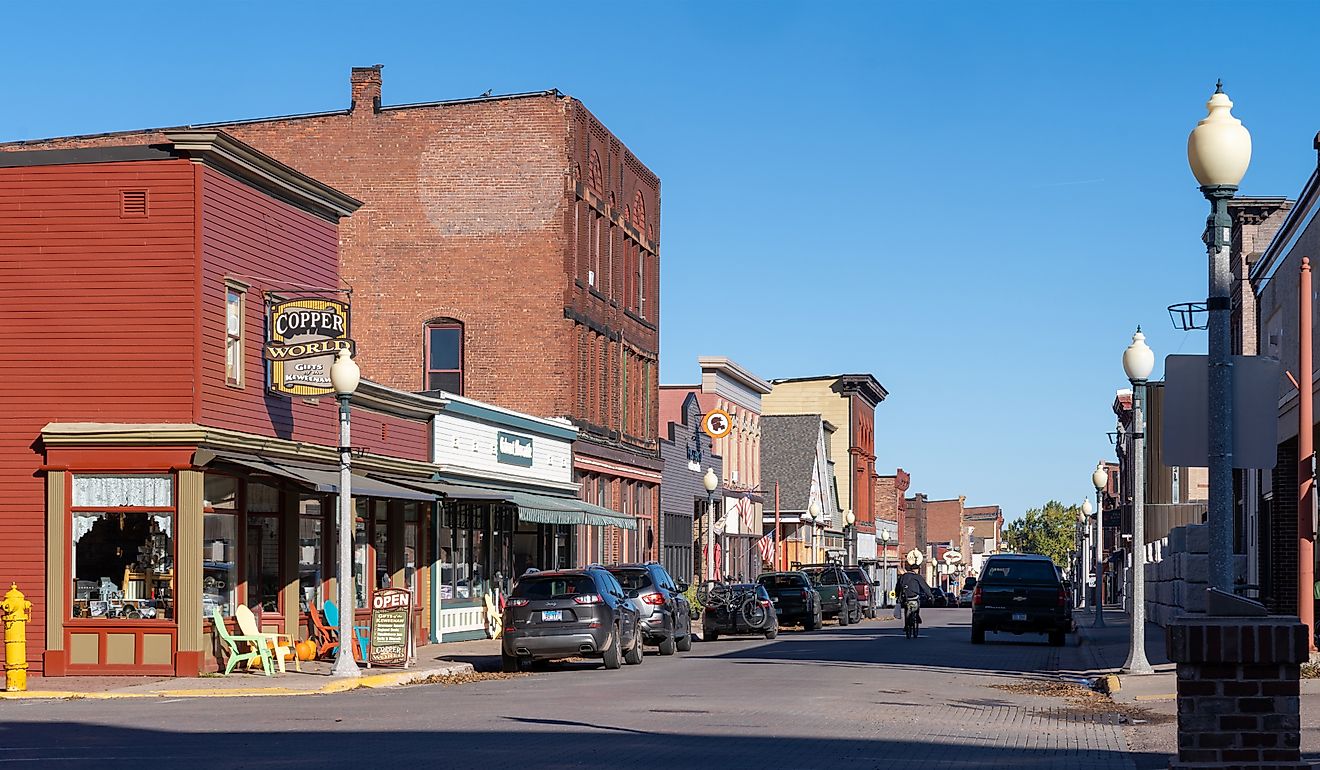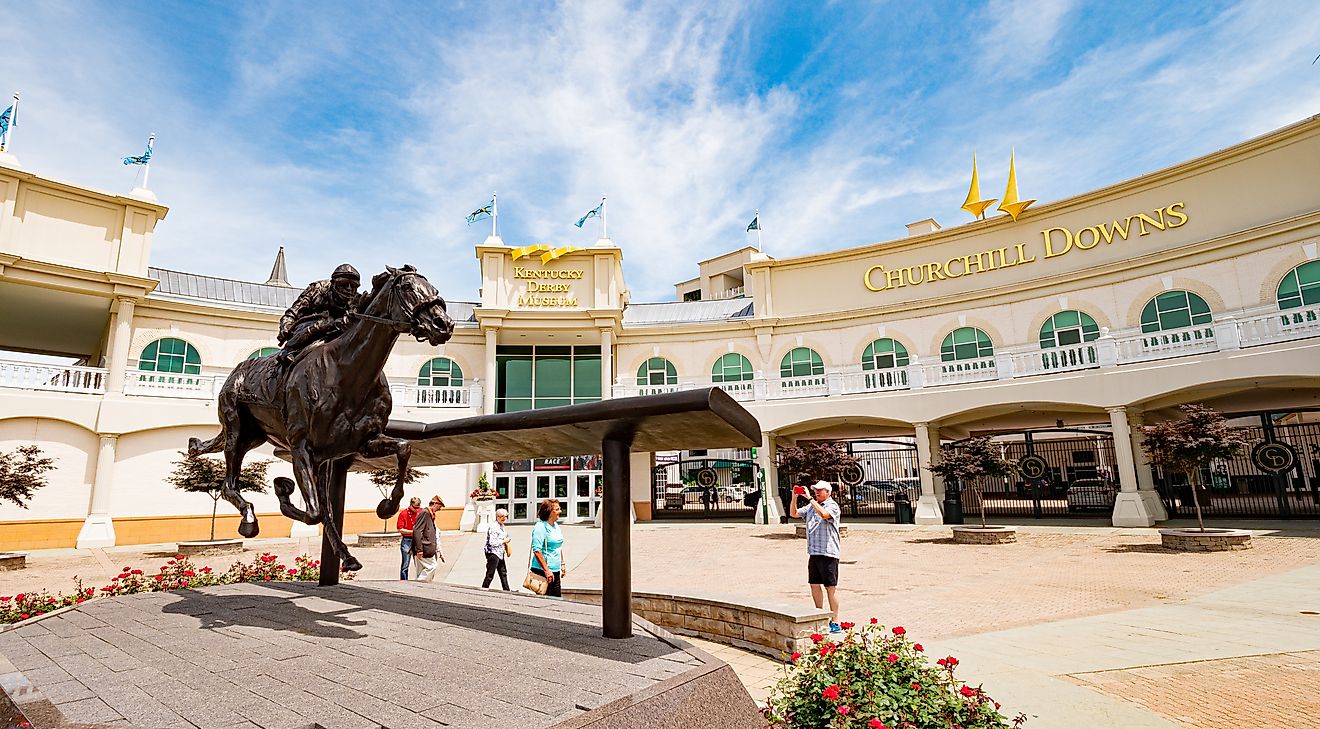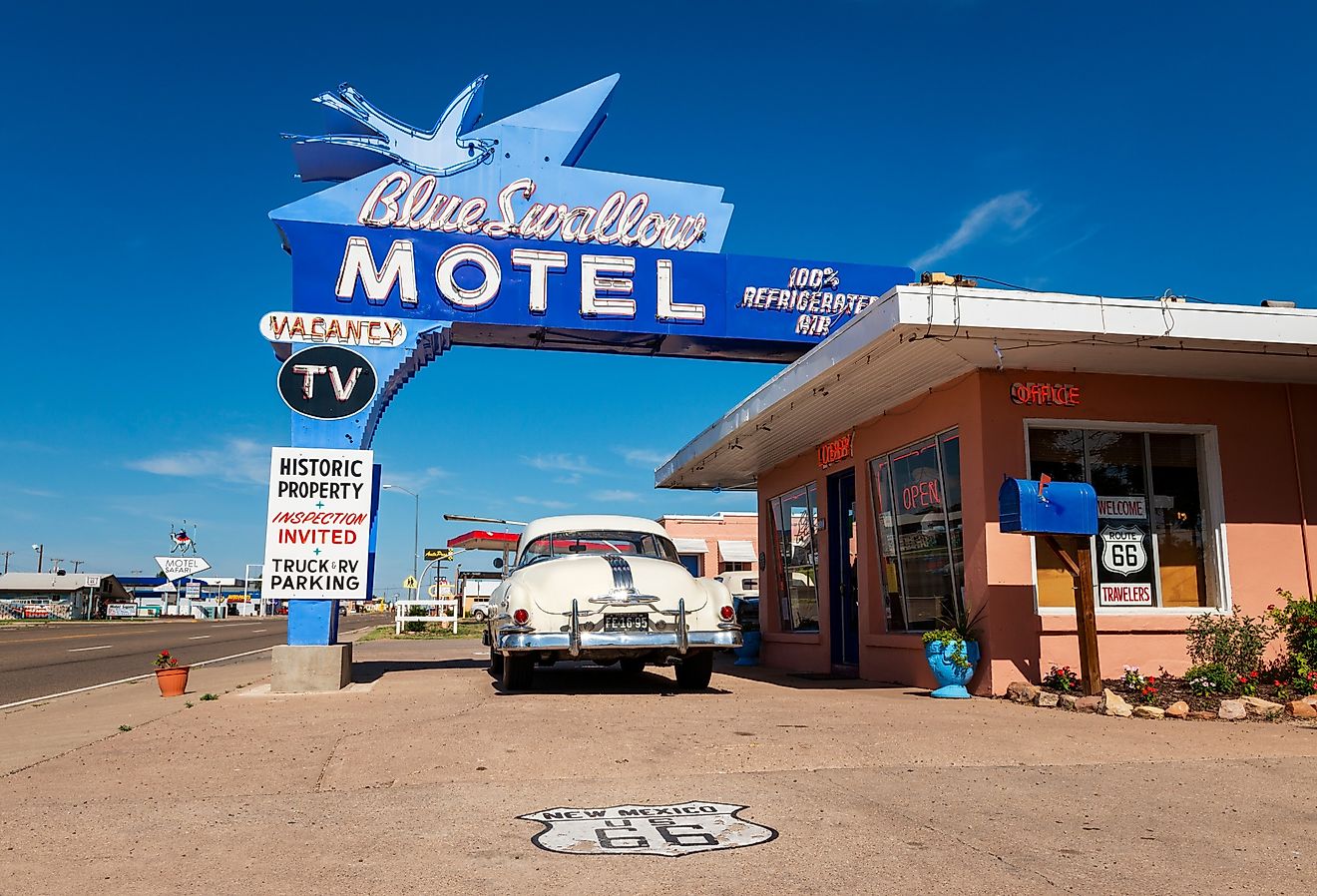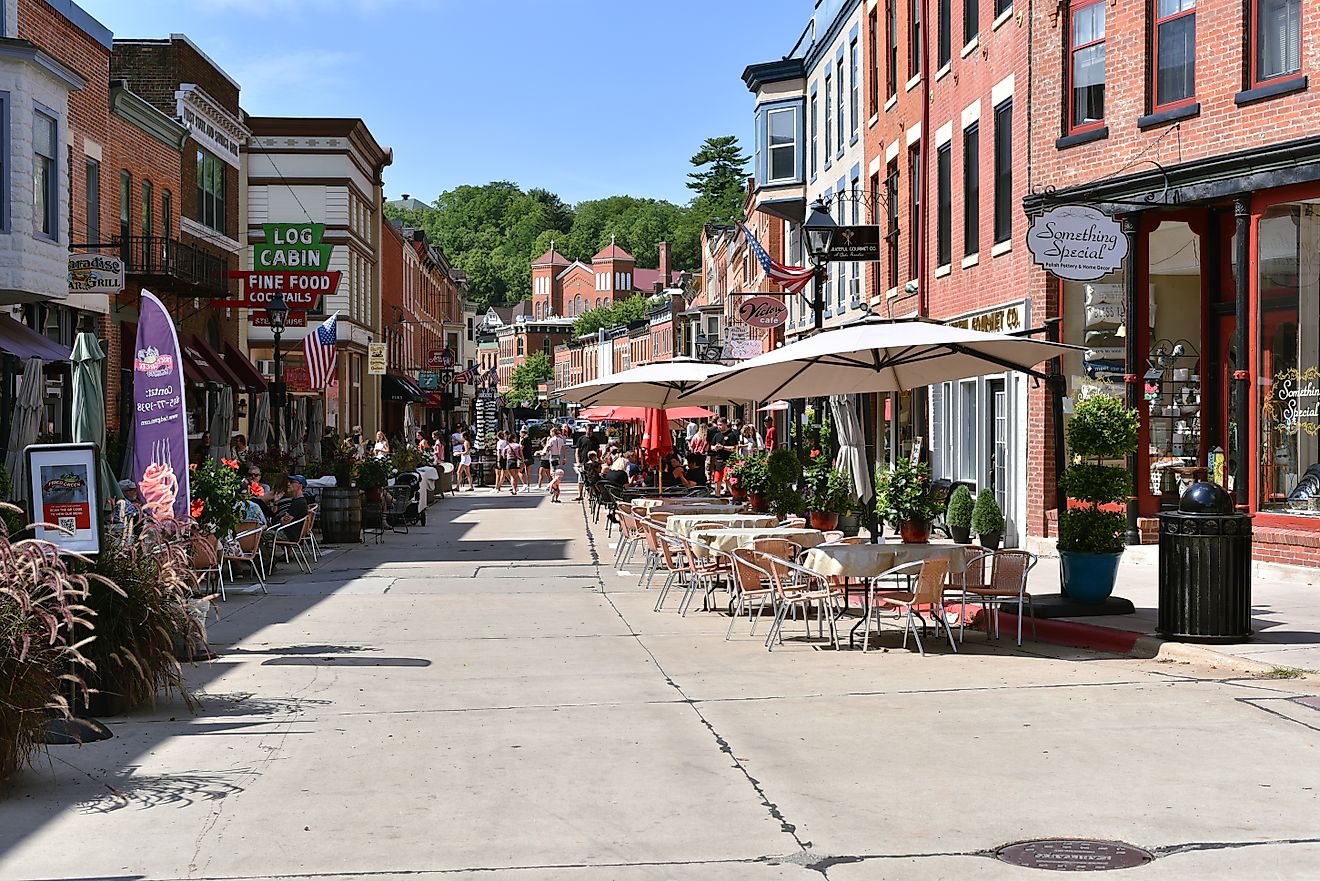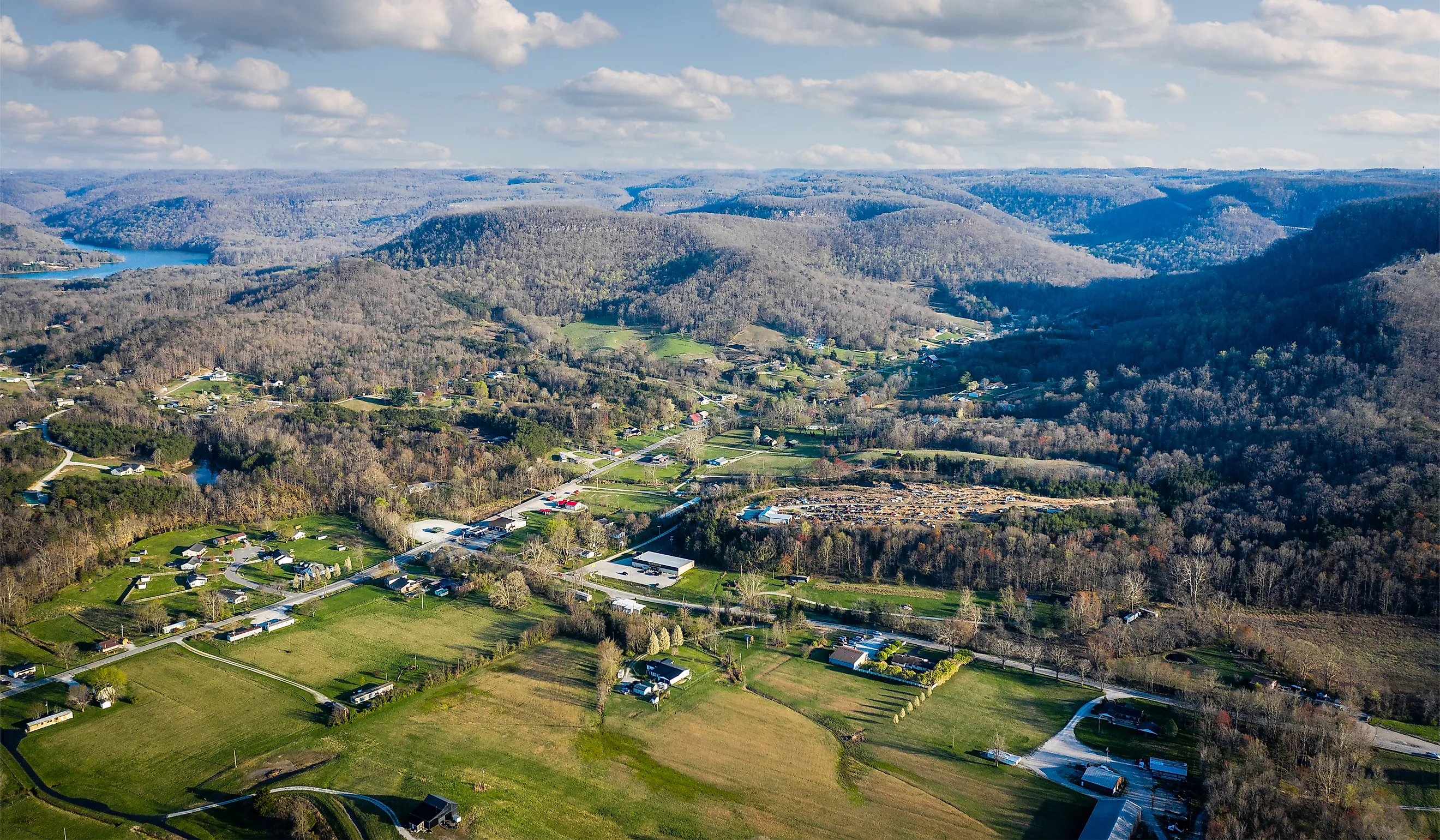
7 Coziest Mountain Towns In Kentucky
The Commonwealth of Kentucky extends deep into the Appalachian Mountains, influencing much of its rugged terrain and cultural diversity. As part of the East South Central States and the broader Southeastern region, the state's rough-hewn land merges wild beauty with a sense of calm comfort. Away from the lively hubs of the Bluegrass State, small towns on the Cumberland Plateau provide a cozy refuge where nature and tradition meet. These communities promise peaceful days, breathtaking views, and an unhurried rhythm, inviting visitors to experience a side of Kentucky defined by warmth, resilience, and untamed charm. Whether you seek comfort or adventure, the Bourbon State's eastern mountainous half delivers both in equal measure.
Hazard
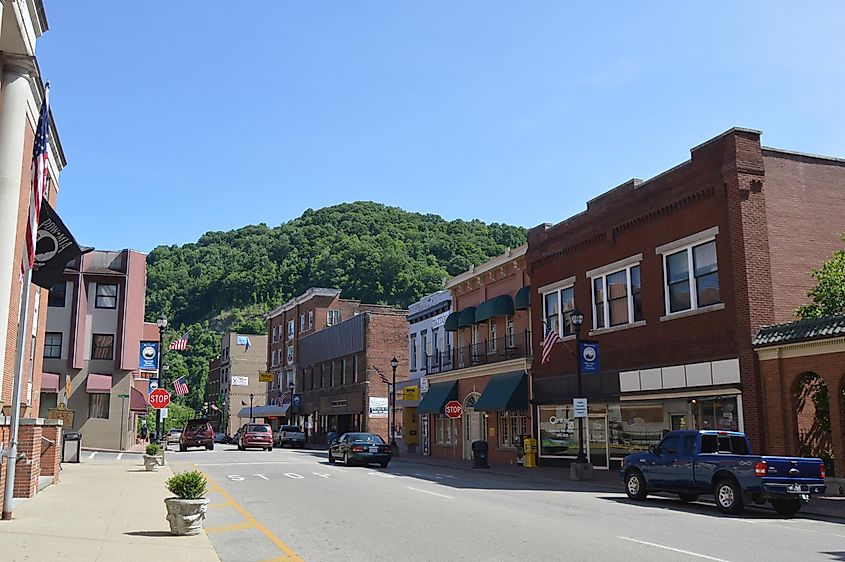
Set in the Appalachian Mountains, Hazard is surrounded by ridgelines, wooded valleys, and backroads that curve along the North Fork of the Kentucky River. The name isn’t just a moniker, as icy hills, dense fog, and winding terrain make every season feel lived-in and physical. That’s not to say the town lacks places to see or things to do that distract from the hazards. The Bobby Davis Museum, for one, features artifacts from World War II, including Eastern Kentucky soldiers’ uniforms, telegrams, and personal letters, along with mining tools. With local newspapers dating back to the 1940s, it documents life in Perry County across decades of change.
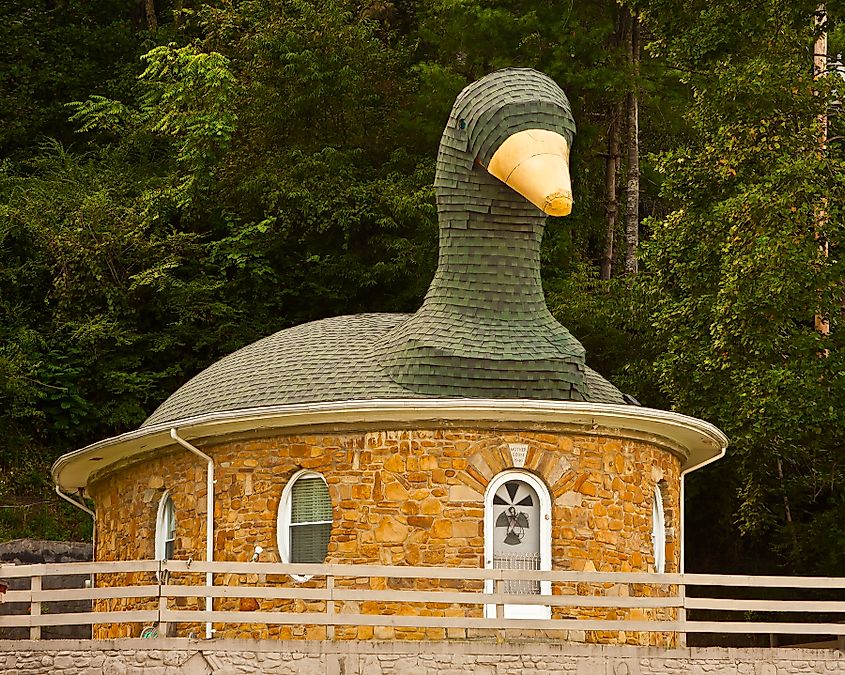
The Mother Goose House is a roadside curiosity from the same era, mesmerizing visitors with a stone goose’s head and egg-shaped windows. About 24 miles northwest of Hazard, Buckhorn Lake State Resort Park’s hiking trails and mountain views enhance nature’s beauty, particularly when they come alive in the fall. From early autumn through the first frost, Holliday Farm and Garden sells regional produce and local honey. Each December, Christmas in a Small Town brings light displays, a parade, and open skating downtown. The festivities unveil an unpredictable extravaganza, as ice and crowds create the kind of small hazards that suit the name.
Paintsville
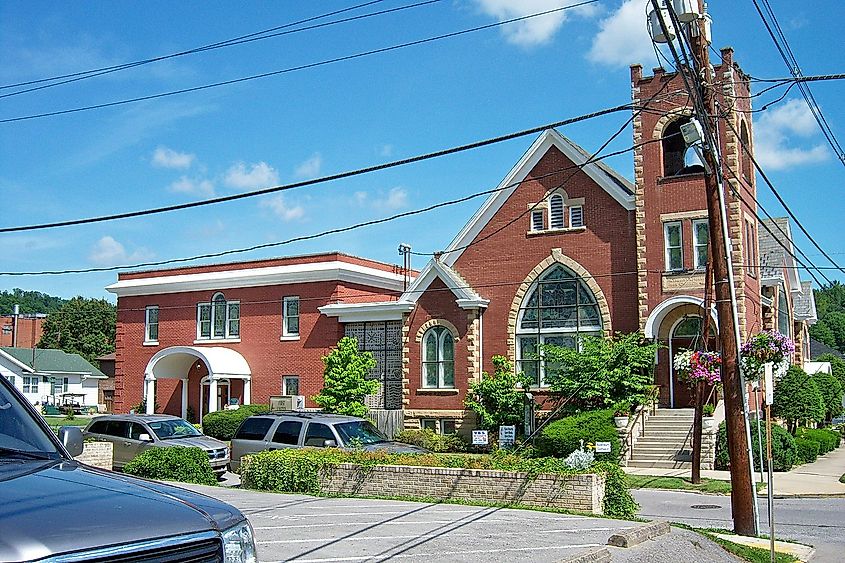
In the Appalachian Mountains of Kentucky, where forested slopes and winding valleys define the land, Paintsville emerges along the Levisa Fork as an uncommon hilly town. The Levisa Fork flows through town, feeding Paintsville Lake and Paintsville Lake State Park through Paint Creek. The recreation area offers camping facilities, a marina, and trails for exploring the waterfront. The cozy atmosphere here stems not only from the mountainous geography but from the town's recognition as a hub for Eastern Kentucky's musical traditions. The US 23 Country Music Highway Museum features multiple exhibits showcasing memorabilia belonging to artists such as Loretta Lynn, The Judds, and Ricky Skaggs, among many others. Visitors can tour costumes, instruments, and personal items that trace the careers of these performers who grew up along Highway 23.
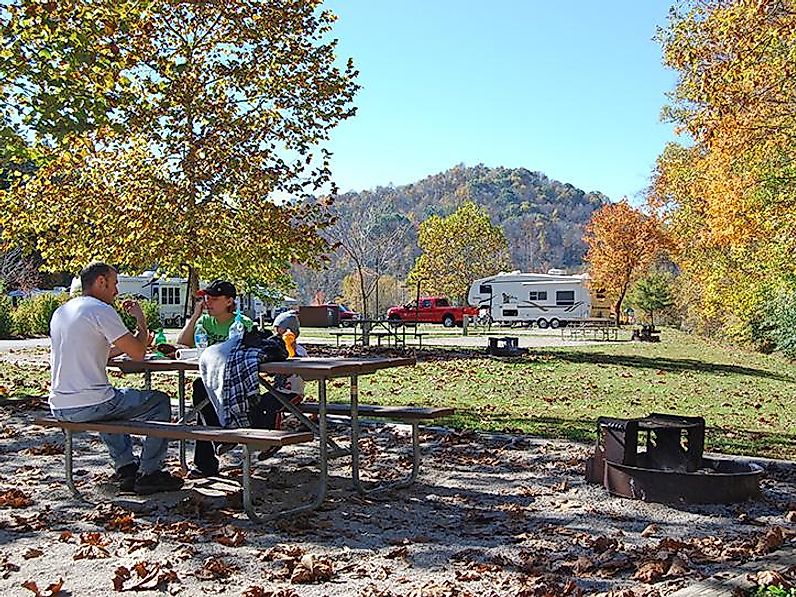
Those interested in history will find Mountain HomePlace, an 1850s living history museum located within the state park boundaries in Staffordsville. This whimsical setting comes to life with interpreters in period clothing reimagining blacksmithing, farming, and other everyday tasks from that period at restored buildings like the McKenzie cabin, one-room schoolhouse, and Fish Trap Church. About six miles southeast in the fellow Johnson County community of Van Lear, the Van Lear Historical Society operates the Coal Miners' Museum, as well as various local exhibits about the coal-mining community. Meanwhile, the Loretta Lynn Homeplace preserves the actual cabin in Butcher Hollow where Lynn and Crystal Gayle spent their childhood.
Benham
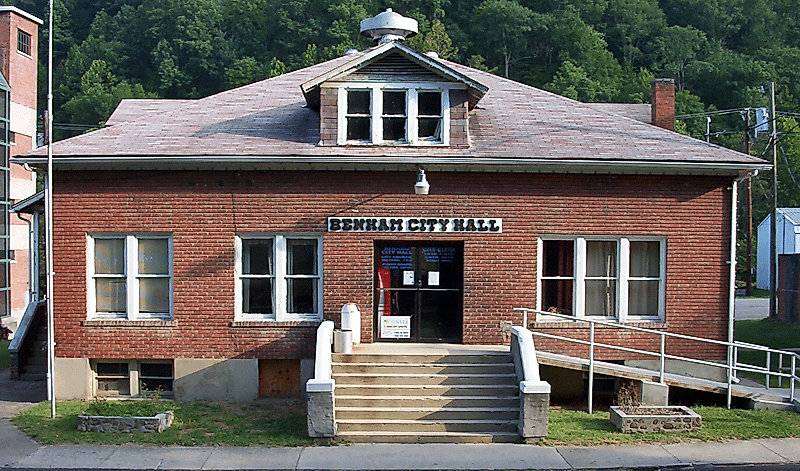
Benham claims its origins in 1910 when International Harvester established this coal town to support the company's underground mining operations in Harlan County's mountains. The Benham Historic District marks the region where the company arranged streets with worker housing, a hospital, and a commissary that functioned as the community's commercial center for decades. The Kentucky Coal Museum now fills the old commissary, stimulating those interested in the field with its mining equipment, photographs, and artifacts that trace the region's coal industry from hand-digging operations to mechanized extraction. Visitors walk through recreated mine rooms and view personal items from families whose livelihoods depended on the mines.
The museum also houses company store tokens and tools miners carried into the shafts daily. Beyond town, Bad Branch State Nature Preserve protects forested slopes along Pine Mountain's south face, where a 60-foot waterfall tumbles over sandstone cliffs in a hemlock gorge. The preserve comprises miles of trails surrounding a steep terrain, sheltering rare plant species and one of Kentucky's only known nesting pairs of common ravens. Less than ten miles from Benham and near Cumberland, Kingdom Come State Park reaches 2,700 feet in elevation, making it Kentucky's highest state park. Here, hikers can access overlooks of surrounding ridges and rock formations, taking on the daunting pathways that cross the mountain's upper reaches.
Berea
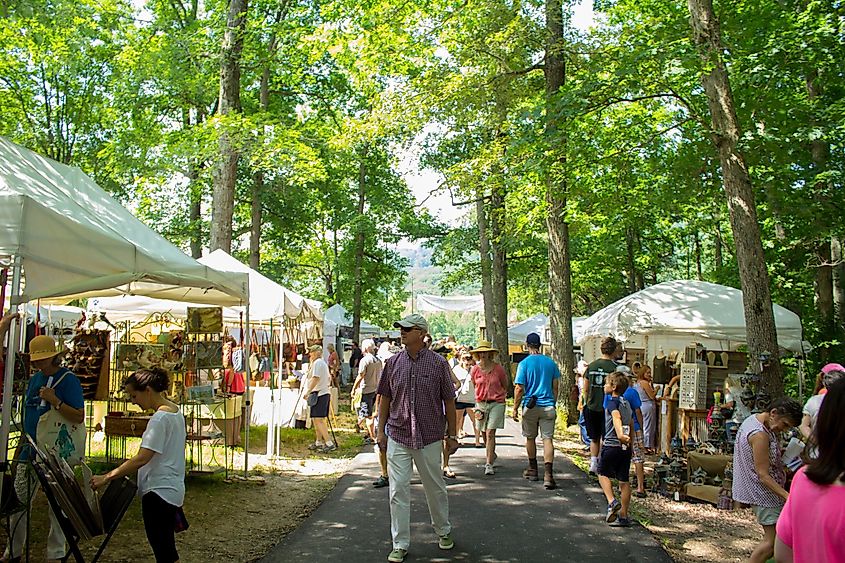
Berea fills a valley in the Appalachian foothills where future leaders are illuminated in liberal arts at the magnificent campus of Berea College. Meanwhile, residents engage in more literal artistry, working daily in studios creating pottery, weavings, and woodwork. The town earns its designation as the Folk Arts and Crafts Capital of Kentucky through more than a century of continuous craft traditions. The Kentucky Artisan Center spotlights the work of over 800 Kentucky artisans in categories ranging from traditional pottery to contemporary sculpture. The Artisan Village in Old Town, on the other hand, is host to working studios where you can watch glassblowers, weavers, and furniture makers demonstrate their techniques.
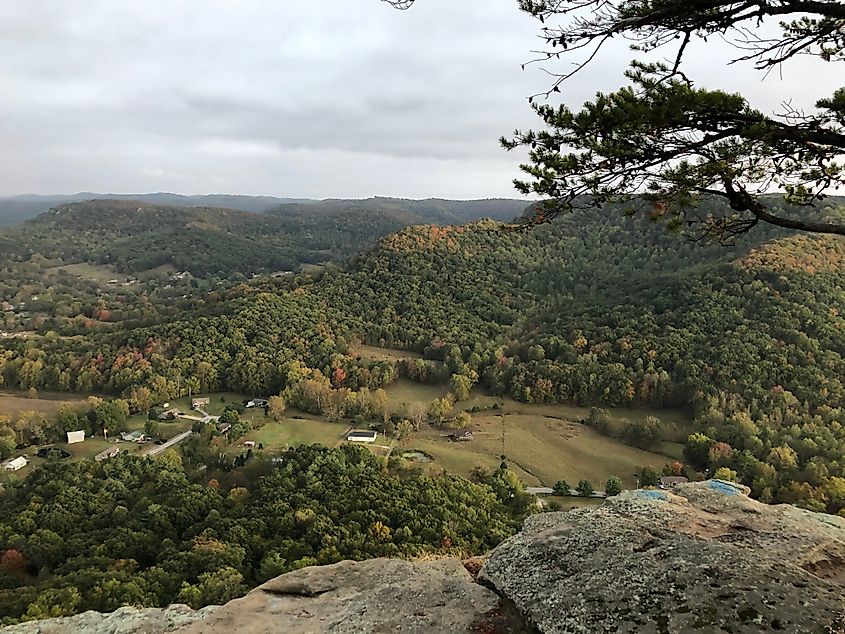
The private college also operates several craft programs where students learn traditional skills, including broom-making and weaving. The Kentucky Guild of Artists and Craftsmen, founded in 1961, anchors the creative community from its location at the intersection of North Broadway and Adams Street. Beyond downtown, the Berea Pinnacles entice hikers to stroll through the adventurous Berea College Forest and surrounding sandstone outcroppings. The trails climb roughly 500 feet over a mile, overlooking the Bluegrass region that spreads north, and the Knobs region extends south. Owsley Fork Reservoir, a 150-acre lake within the college forest, attracts anglers to hunt largemouth bass, bluegill, and catfish. Water sports enthusiasts, meanwhile, are encouraged to participate in non-motorized activities, such as kayaking, while exploring the wooded shoreline.
Ashland
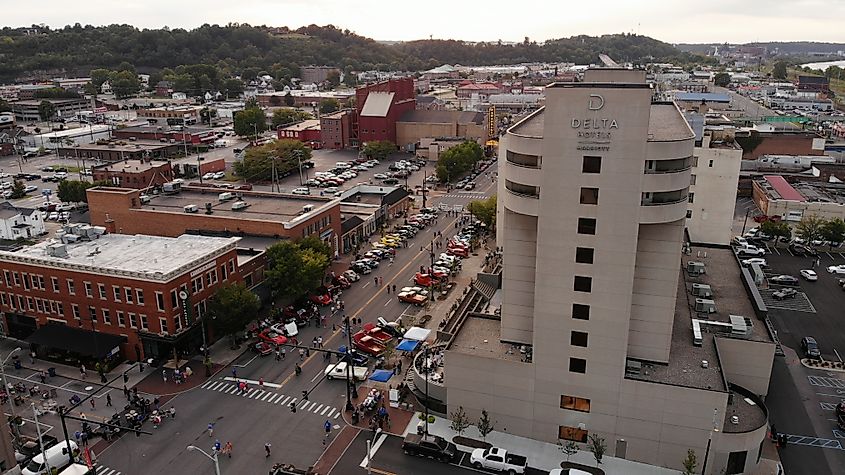
Ashland cascades along the Ohio River in northeastern Kentucky, where downtown streets invite visitors into shops and restaurants that reflect the community's welcoming character. The city evolved from the iron and steel industries that shaped the region's economy for generations, and residents maintain connections to that industrial heritage. Central Park centers the city with over a thousand trees, walking trails, fountains, playgrounds, and a log house that predates the park's creation. The Paramount Arts Center, opened in 1931 as one of the country's first theaters designed for talking pictures, now organizes symphonies, Broadway productions, and concerts in a restored Art Deco interior.
Four blocks of downtown form The District, where Broadway Square serves as an outdoor gathering space and Art Alley displays a collection of murals from local and visiting artists. The Highlands Museum and Discovery Center reinvigorates a former department store building in the Commercial Historic District. Its exhibits trace regional history from Native American settlements through the industrial era, alongside interactive science displays that engage younger visitors. The museum relocated to its current location in 1994 after outgrowing its original home in the Mayo Mansion.
Middlesboro
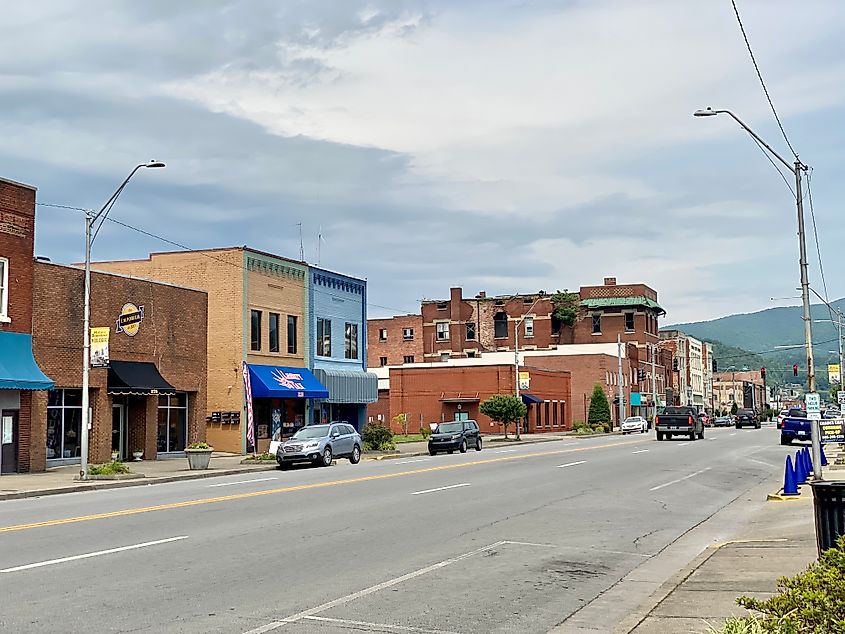
Middlesboro gains recognition primarily for Cumberland Gap National Historical Park, where the Pinnacle Overlook towers 2,440 feet above sea level and Hensley Settlement maintains an early 20th-century mountain community. The city connects Virginia, Tennessee, and Kentucky at the Tri-State Peak, though plenty of appeal exists within the town itself, shadowed by the Cumberland Mountains. The Bell County Coal House and Museum safeguards regional heritage through photographs, documents, and mining equipment from coal and railroad eras. Constructed entirely from regional coal in 1926, the local history museum commands attention at North 20th Street. Not far, the Alexander Arthur Museum contains personal items owned by Alexander Arthur, the founder of Middlesboro, focusing on him and the city's founding, in a vintage brick building on Cumberland Avenue.
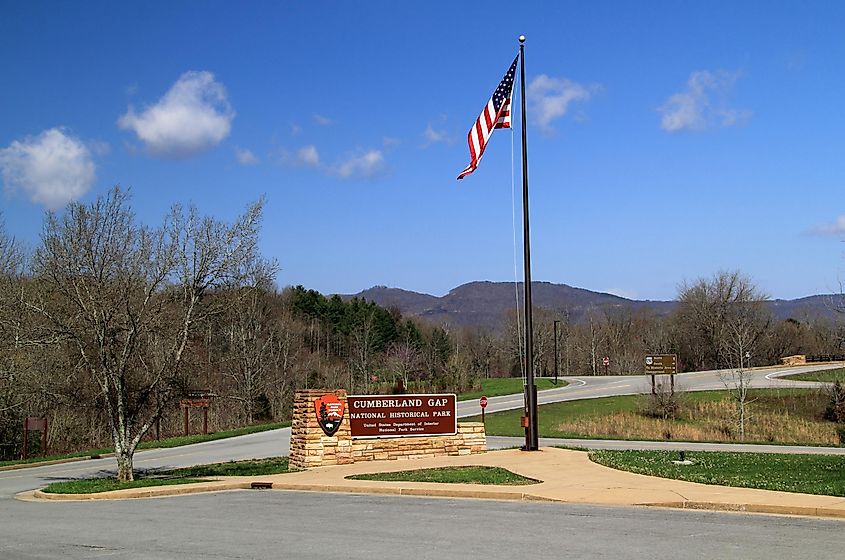
Ford's Woods Park continues adventures for families and older visitors without the intensity of mountain climbing, featuring playgrounds and picnic areas. Beyond the prominent national park, Cannon Creek Lake in the north brings in fishing enthusiasts and boaters to its shoreline, surrounded by wooded hills. One of the prettiest small towns in Kentucky, the city is nestled within the Middlesboro Basin, a crater formed by a meteorite impact roughly 300 million years ago, making it the only American city located inside an impact structure. This geological formation later fascinated developers who discovered iron and coal deposits in the surrounding Pine Mountain ridges.
Pikeville
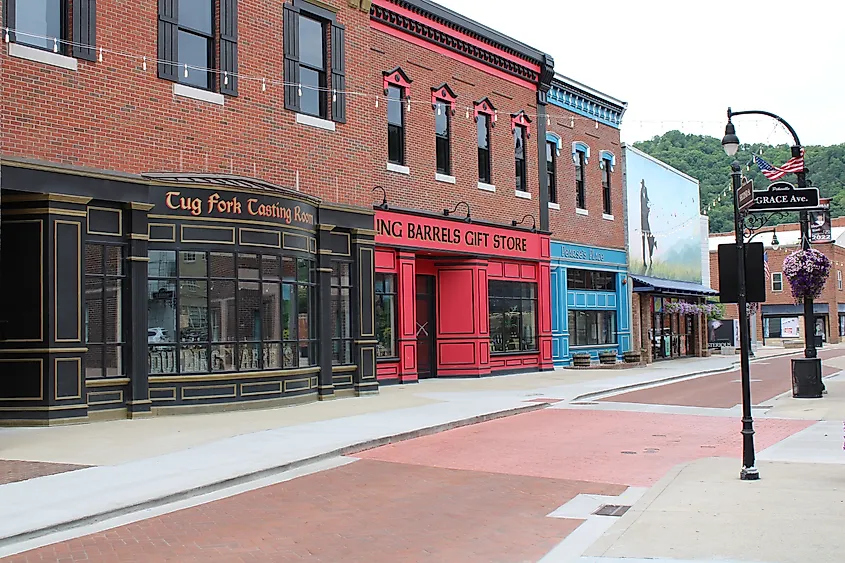
Pikeville welcomes visitors in Kentucky's Appalachian Mountains, where the Levisa Fork once curved sharply around Peach Orchard Mountain before city leaders redirected the river through the mountain itself. The Pikeville Cut-Through became one of the largest civil engineering projects in the United States, second only to the Panama Canal in the Western Hemisphere for cargo moved. The redirected Levisa Fork now flows through what's known as the Hatfield-McCoy River Trail, which draws kayakers and canoeists to its gentle riffles and flowing shoals.
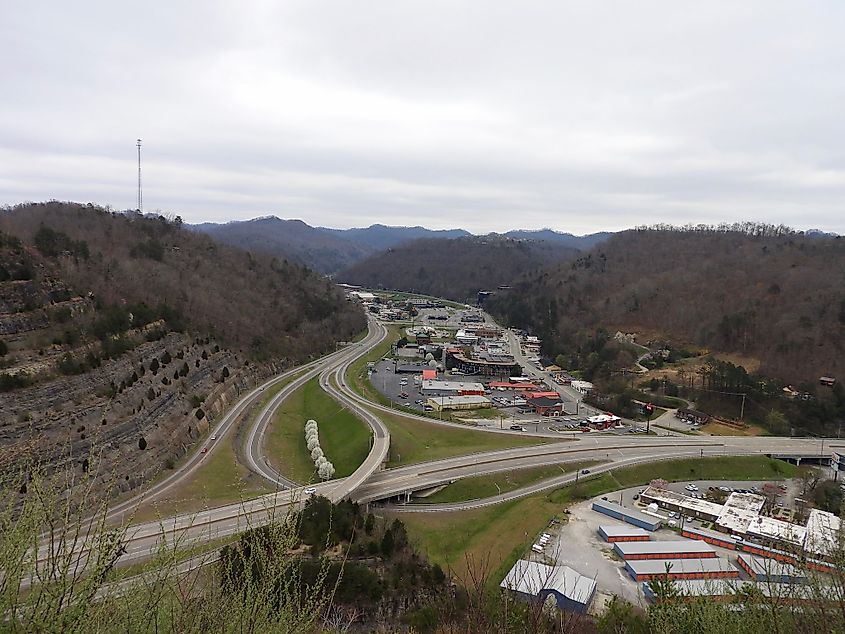
Downtown shops and restaurants line the revitalized streets, where locals greet travelers with the characteristic warmth of the mountains. The Big Sandy Heritage Center lays out, piece by piece, a repository of regional history inside an old railroad depot, with exhibits ranging from Native life and wartime artifacts to the Hatfield-McCoy feud. Visitors exploring feud history can follow a self-guided driving tour to sites including Dils Cemetery, where Randolph McCoy and several family members are buried. Bob Amos Park, meanwhile, comprises facilities such as picnic shelters and walking trails, while its higher elevation gives magnificent views of the Cut-Through, as well as downtown Pikeville.
The High Hollow Roads of Eastern Kentucky
One of the landlocked states of the United States, Kentucky lies nearly half within the Appalachian region, a fact that has defined everything from its coal history to its musical heritage. Its hills have been climbed, lived in, and mined, as Paintsville stands witness to, long before interstates or tourism. That terrain still brings quiet, cold air and a pace that doesn’t rush. You’ll find it along the trails near Berea, in the backroads between Hazard and Buckhorn Lake, and outside the old mining streets of Benham. Cooler weather tends to persist in these elevations, especially after the first frost. Whether it’s a weaving studio behind a college forest or a stone goose watching over an old highway, these places aren’t chasing attention. They might remain easy to miss at times, but these Kentucky towns are worth the effort for their cozy vibes.
